
Malaysia’s first conference on Datuk Gong Studies
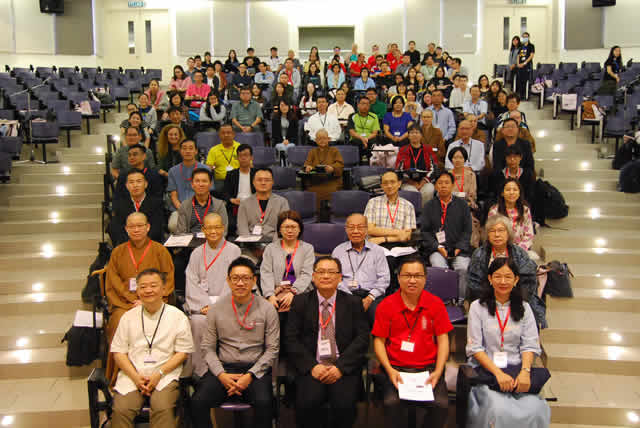
A group photo of the guests, speakers and participants from local and abroad
UTAR hosted the “Historical Sources and Fieldwork: Conference on Datuk Gong Studies (史料与田野调查:拿督公研讨会)” from 2 to 3 November 2019 at Kampar Campus. The conference received wide participation from researchers, academics, students and members of the public from local and abroad.
The inaugural conference was a joint collaboration between UTAR Institute of Chinese Studies (ICS) and Centre for Chinese Studies (CChS) Malaysian Chinese and Cultural Studies Unit. It was sponsored by Siang Heng Plastic Ware Sdn Bhd. This was also the first conference that came with the theme ‘Datuk Gong Studies' in Malaysia. It explored the traits and connotations of Datuk Gong belief from the perspective of different disciplines such as history, anthropology, sociology, folkloristics, religion and literature in a rigorous academic manner.
Invited to officiate the event was ICS Dean Assoc Prof Dr Chong Siou Wei, CChs Chairperson Assoc Prof Dr Wong Wun Bin, Organising Chairperson-cum-Head of Malaysian Chinese and Cultural Studies Unit Dr Tan Ai Boay and Siang Heng Plastic Ware Sdn Bhd Finance Manager Ng Lian Soon representing the company’s Managing Director Dato’ Teoh Boon Teong. Also present at the event were Heads of Department of Chinese Studies for Sungai Long Campus and Kampar Campus Assoc Prof Dr Liau Ping Leng and Dr Toh Teong Chuan, Head of Contemporary China Studies Unit Dr Chin Chong Foh, Head of Sinology Unit Dr Tan Beng Piou and ICS academics.

Dr Tan Ai Boay sharing the aims of the conference
In her welcome speech, Dr Tan Ai Boay expressed her gratitude to ICS, CChs, sponsors and committee members for their commitment and support, and shared the aims of the conference. She revealed, “Datuk Gong is a common god or folk belief among the Chinese community. People always joke and say ‘you will meet Datuk Gong in every corner when you visit Chinese places’, but have you ever thought about what kind of god he is? Datuk Gongs belief is prevalent in Malaysia, Singapore and other places in Southeast Asia, and is a typical example of localisation of local Chinese beliefs in Southeast Asia.”
She added, “In fact, many researchers have done research on Datuk Gong from the anthropological and sociological perspectives, and published related journal articles. One of them is Prof Zeng Ling from Xia Men University, who is also one of the speakers at this conference. Therefore, I hope through the sharing of this interdisciplinary study, we will understand Datuk Gong belief from different angles and most importantly open up a new research area.”
Regarding the theme, Dr Wong shared, “The conference has a special theme which is related to folk belief. Religious belief, for many years, has served as spiritual and mental sustenance among the Chinese. Datuk Gong belief is one of the very common folk beliefs in our country. Hence it is consecrated in the temples and also construction sites, most of the time.” Further on, he introduced the overview and development of each unit parked under CChs, and said, “The studies on Datuk Gong are closely related to the local research. A number of researches were carried out by our academics and students on religious studies. The studies are related to Buddhism, Taoism, Confucianism, folk belief, Christianity, Catholicism and Islam.”
Delivering his welcome address, Dr Chong briefly introduced Kampar Campus and explained UTAR’s development, “As the host for this significant event, we are glad to welcome all the speakers and participants from Malaysia and abroad to our UTAR Kampar Campus. Kampar was once the world’s most famous place for producing tin mining. After the tin mining industry declined in the year 1980, the development of Kampar also went down. However, the establishment of UTAR in 2007 has brought booming development to Kampar in the past 10 years. It has gradually transformed into an education hub for academics, producing intellectuals. Therefore, by organising various academic activities such as this conference today, we hope to provide a platform for the participants to brainstorm ideas, broaden their horizons, absorb more new knowledge and stimulate research sparks.”
Sharing his experience, Dr Chong said, “When I was a kid, it was my responsibility to burn incense for Datuk Gong when I go to my grandparents’ house. I still remember the appearance of Datuk Gong; that time it was still a stone, and now it has been transformed into a statue with multiple images. It is worth noting the factors that caused these changes in the past few decades.”
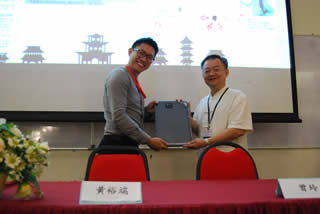
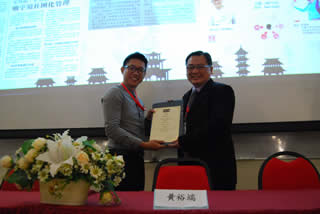
Dr Wong (left) and Dr Chong receiving a souvenir from Ng (right)
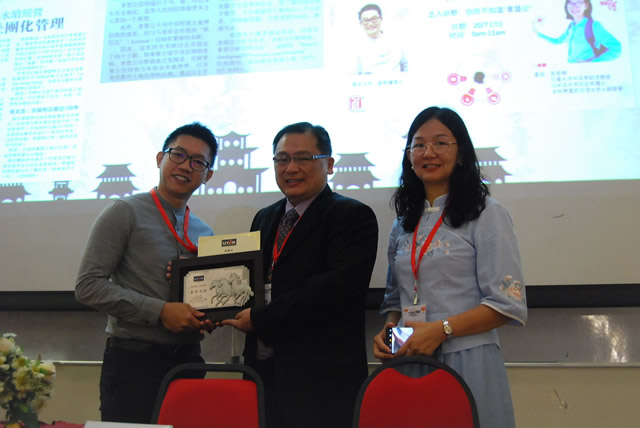
Dr Chong (middle) presenting a token of appreciation to Ng, while Dr Tan Ai Boay (far right) looks on
Representing Dato’ Teoh, Ng said, “History pays attention to facts, however, Chinese history is rarely written. Dr Tan Ai Boay and her team are working hard to do their field investigation across Malaysia while collecting historical artefacts. This is a race against time and it is very challenging. We have put the historical incense burner for display at the conference, with hope that the participants will learn to cherish the historical relics. Cherishing historical relics are also part of our responsibility to the future generations.”
Dato’s Teoh who is also the chairperson of Parit Buntar Datuk Gong Temple (巴里文打拿督公蓝帛古庙), lent the historical incense burner to put it on display at the conference. The participants were also encouraged to guess the words crafted on the incense burner. According to written records, the incense burner from Parit Buntar Datuk Gong Temple was made in the year 1886. This shows that the Datuk Gong Temple is the oldest temple in Perak. The organising committee organised a mini-game session for the participants to guess the words. The fastest person to guess the most number of words was awarded.
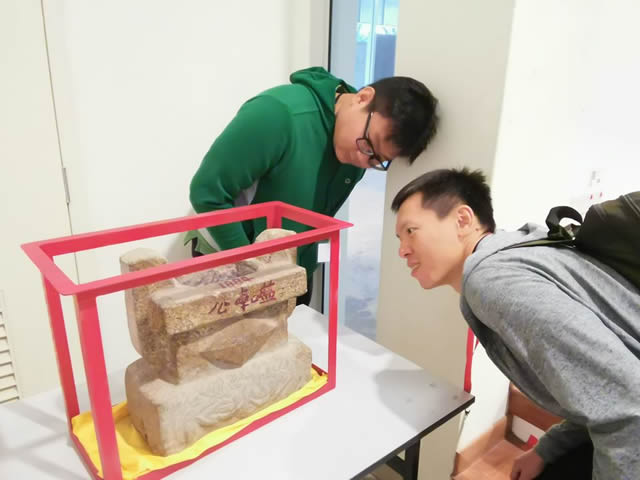
Participants observing the words crafted on the incense burner
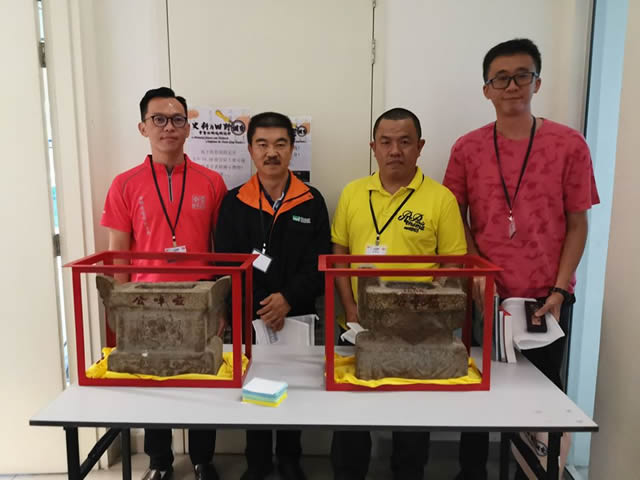
Winners of the mini-game
The conference was divided into six sessions, namely centennial review, research overview, case studies, texts and regions, religious dialogue and cross-domain comparison. The first session was moderated by Prof Zeng; the speakers were Wong Yee Tuan from Penang Institute, Dr Tan Ai Boay and Tang Ah Chai from Action Foundation. The speakers from UTAR included Dr Toh, Dr Liau, Dr Chin and postgraduate students Heah Huey Leng and Ong Min Yu.
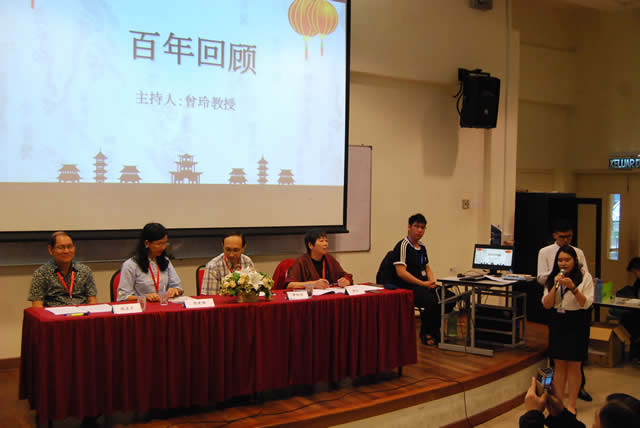
Tang (from far left), Dr Tan Ai Boay, Wong and Prof Zeng during the first session
The conference came to an end with a concluding session that was chaired by Tang. The moderator was Dr Chong. Tang is also a prominent current affairs commentator in the Chinese Malaysian community. He concluded, “After the two days discussion, I found that we had magnified the old stereotype on Datuk Gong and that some of the research findings are closely related to Datuk Keramat, an early belief in this land. However, the conference lays the ground for participants to understand the institutional changes in folk beliefs, from the first dissertation on Chinese beliefs under British colonial during the 19th century, to the control and deterrence under the Islamic legal system. Besides that, Datuk Gong belief has a localisation phenomenon, such as Datuk Gong Temple in Parit Buntar, playing the role on gathering the community; while Datuk Gong golden statue in Lian He Temple, Klang represented the late Sultan Abdul Samad, and these special situations are not found elsewhere. ” He added, “If the conference can be held regularly in the future, I believe research on Datuk Gong studies can become a new research area.”

Tang (left) and Dr Chong during the concluding session

The speakers visited ICS after the conference
The two-day conference sorted out various rumours and speculations on Datuk Gong’s belief, and at the same time an academic analysis regarding this folk belief was made. With the end of the seminar, a new chapter was opened for Datuk Gong studies, which is a research area that needs to be further explored.
© 2019 UNIVERSITI TUNKU ABDUL RAHMAN DU012(A).
Wholly owned by UTAR Education Foundation Co. No. 578227-M LEGAL STATEMENT TERM OF USAGE PRIVACY NOTICE